Chapter 1
1.2 Types of Control Actions
Note that examples shown here are from Online Control Systems Tutorials that provided illustrations and visualization of basic concepts of Control through streamed video, animations and interactive, self-scoring quizzes. Unfortunately these tutorials are no longer available as they were created using Flash.

1.2.1 Basic Concepts of Feedback
The diagram below represents basic feedback loop configuration that we will be studying in this course. See more introductory information in the Tutorials online in the section on Basic Introduction to Control Systems.
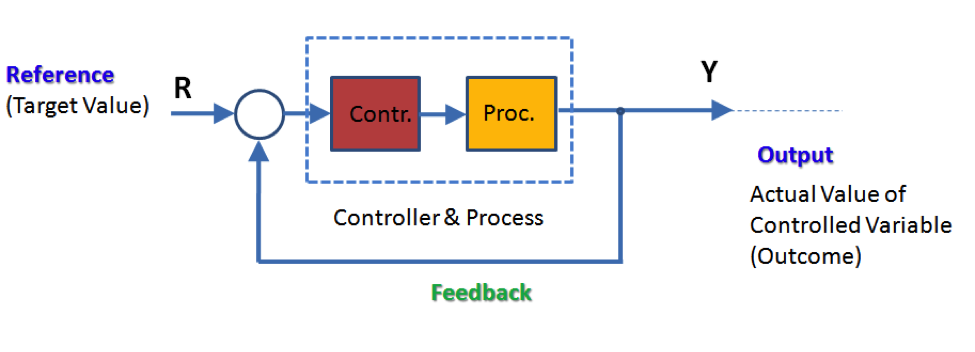
Question: In common sense of the word, positive feedback is good, negative feedback is bad. Would that work for a control system? If yes, why? If no, why? Give examples of positive and negative feedback in real-life systems.
1.2.2 Math of the Basic Feedback Loop
Consider the basic negative feedback loop in Figure 1‑3. Derive the Input-Output relationship for this loop, describing the closed loop gain of this system:
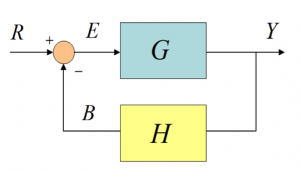
HINT: Consider these basic blocks and the equations they represent.

1.2.3 Positive Feedback
Positive feedback leads to instability. Example – putting a powered mike in front of a speaker.
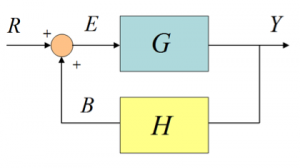
1.2.4 Open Loop Control – No Disturbance Present
Consider an example in the Tutorials online in the section on Basic Introduction to Control Systems – car driving with no feedback. Let us look at two cases:
- No disturbance – flat road
- Disturbance – road grade
Case # 1 – No Disturbance Present
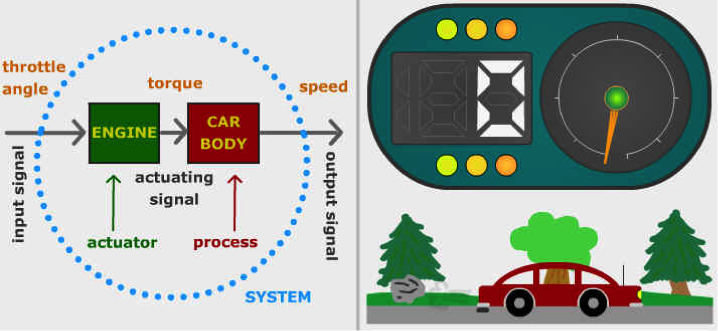
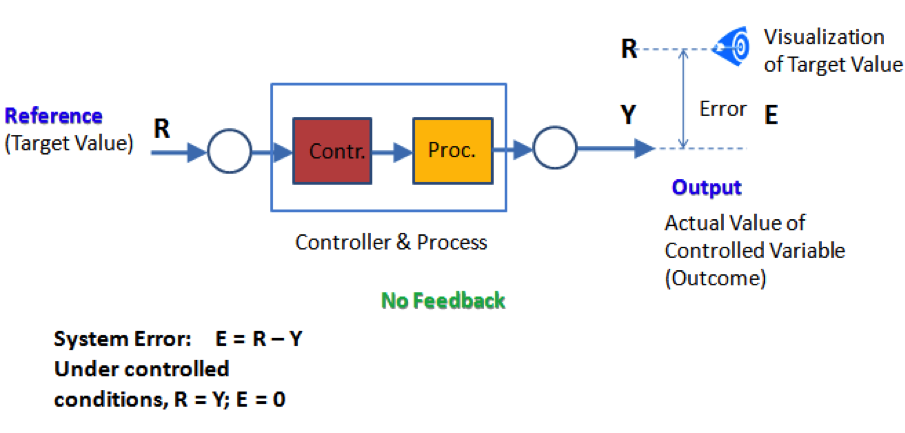
Examples of a Simple Open Loop Control:
- Lights On/Lights Off
- Toaster
- Electric Screwdriver
- Programmable Logic Controller
1.2.5 Open Loop Control – Disturbance Present
Case # 2 – Disturbance Present
Imagine now driving a car at an intended constant speed (e.g. 100 km/hr) – to achieve that, you press the gas pedal up to a certain throttle opening. Suddenly the road grade changes – a disturbance occurs. If driven with the same throttle opening, the car will slow down. Conclusion – Open Loop Control cannot handle uncertainty (disturbance).

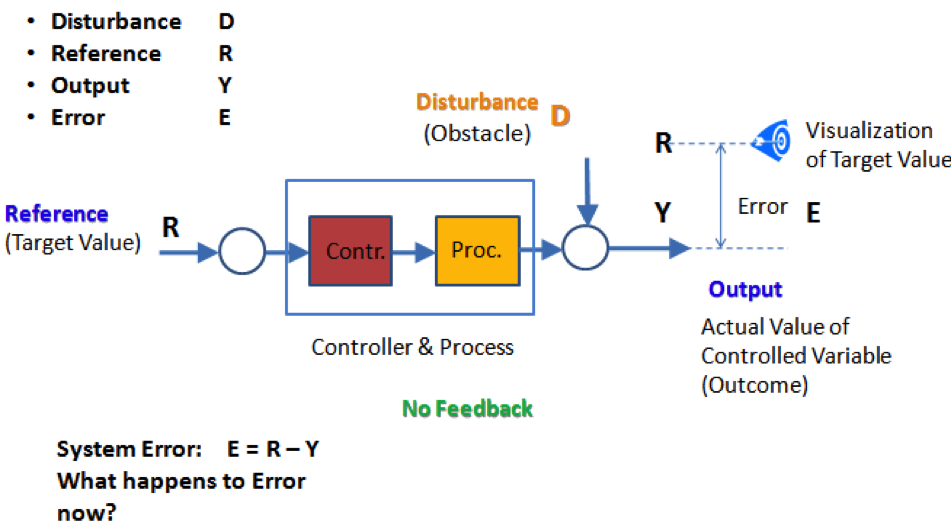
1.2.6 Closed Loop Control
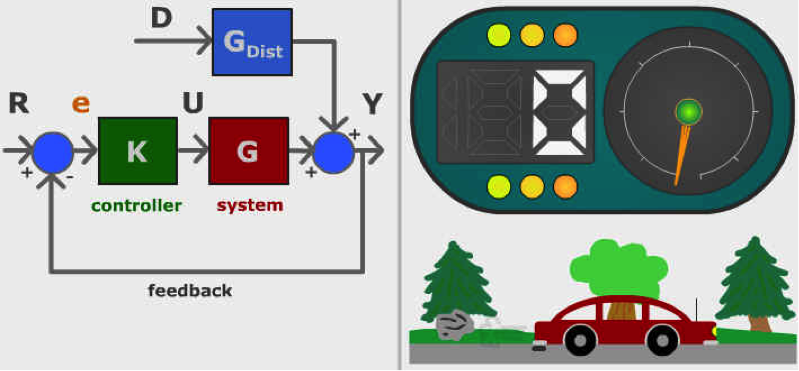
Feedback (Closed Loop) Control can handle uncertainty (both disturbance and parameter drift).
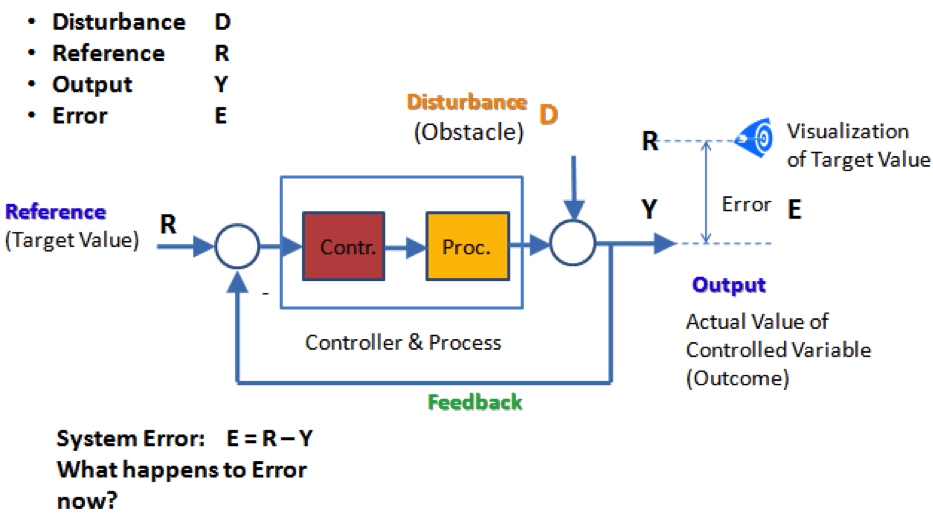
Feedback reduces System Error (i.e. difference between Reference and Output) and can minimize the effect Disturbance has on the Output – this action is referred to as Disturbance Rejection.
Examples of Closed Loop Control:
- Human Only: walking, sweating (temperature regulation), skateboarding etc.
- Human-in-the-Loop: driving a car (or any other vehicle), adjusting temperature of water in the shower; manual adjustment of settings for a device (e.g. valve, furnace, etc.)
- Automatic Feedback: thermostat heater, any industrial or non-industrial autonomous robot, cruise control in a car, “smart” prosthetics (biofeedback), Dean Kamen’s wheel-chair that can climb stairs; gap control in mag-lev (magnetic levitation) system in super-fast trains, balancing of a Segway device, etc.
Systems can have Human-in-the-Loop and Automatic Control at the same time. Example: operating the Segway – at one level, an automatic control system makes sure that the device is balanced in an upright position, on another level, the human operator makes control decisions about direction and speed of travel.
1.2.7 Summary
Open Loop Control:
- OK in predictable environments & uncomplicated tasks
- Limitation: Vulnerable to unpredictability (Disturbance)
- Result: Errors occur
Closed Loop Control:
- Robust performance – excellent handling of unpredictability (Disturbance);
- Result: Error reduced or eliminated;
- Limitation: complexity & cost; instability may occur
Differences:
- Open Loop – no attempt to verify the outcome, no feedback, no correction
- Closed Loop – outcome assessed, feedback provided, corrective action taken
Similarities:
- Both have a power source and a certain level of complexity
- Both perform useful tasks.

